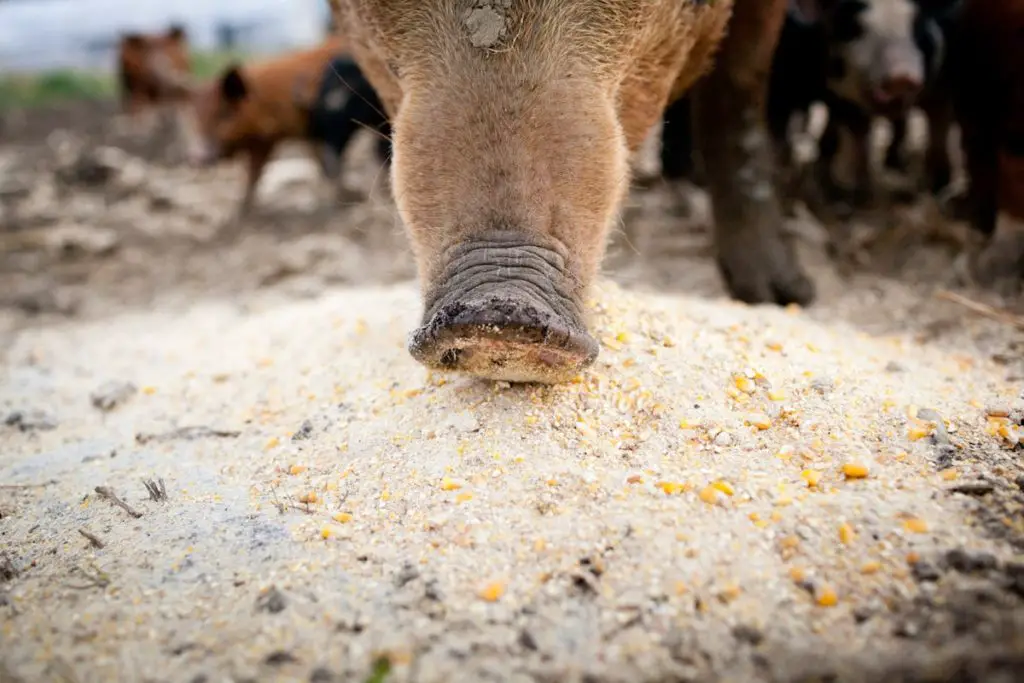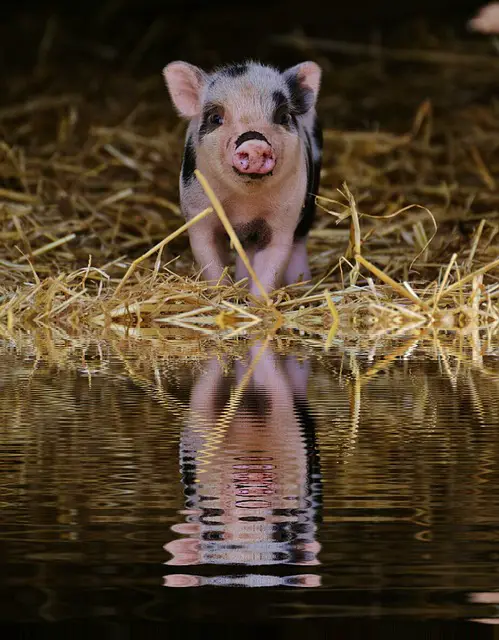One of the primary things you should prepare for when planning to adopt a pet pig is the food it will eat, and grains usually come right on top of the list.
But do pigs really need grains? Pigs definitely need grains because they are a great source of nourishment. A good mix of grains can deliver both energy and protein, both of which your pig needs to grow and stay healthy.
You just have to make sure that any cereal grains you feed your pig have been processed properly. Otherwise, they won’t be able to digest it properly.

Of course, your pig will not really thrive on grains alone. Especially if you want your pig to live a long, happy and healthy life, you’ll have to give your pig a well-balanced diet that covers all of the nutritional requirements specific for its age and size.
Basic Rules for a Pig’s Proper Diet
It’s good to know that there are basic rules that can guide you in providing the best nutrition for your pig.
Here are the guidelines you’d have to follow:
- Feed your pig processed cereal grains.
A pig’s stomach is designed differently than a human stomach. In fact, pigs are unable to digest fiber efficiently because of their single stomach. This is why you need to make sure the grains your pig eats is processed, and is not fed whole.
When pigs eat whole grains, it will all just pass through the pig’s stomach and come out whole and undigested in their manure. This doesn’t just mean that all that feed is wasted — it also means that your pig is unable to get the nutrients that it needs from its food.
You have three different options as far as grain processing is concerned — cracked, rolled, or soaked.
Although cracked and rolled grains are okay, soaked grains may have a few risks. For one thing, it’s not ideal if you have a huge number of pigs to feed. Also, soaking can lead to molds, and molds release toxins that may hurt your pig.
You may also go for pellets, as long as you get the right size for your pig’s age and weight.
How do you know that your pig is eating the right kind of processed grains, or that the grains you are feeding your pig have been processed the right way?
Just be on the lookout for whole, undigested grains in your pig’s manure. If you see those, then you’re wasting feeds and you might want to rethink the way your pig’s food is being processed.
- Pig food is not a one-size-fits-all deal.
When it comes to feeding your pig, it’s not enough to just ask everybody else what they’re feeding their pigs. Even if your pigs look alike and are just about the same size, your pig may have different nutritional requirements than that of another.
For example, growing pigs would have a higher energy requirement compared to a full-grown adult pig. The same can be said for piglets and for pigs that are in the process of being weaned from their mothers.
Pigs that stay outdoors would also have higher energy requirements compared to those that stay indoors most of the time. Because outdoor pigs usually roam around freely, they burn more energy more than a pig who just lies around most of the time.
This could require more effort if you have a number of pigs of different ages and sizes. This means you may have to prepare different kinds of food for each pig to make sure every single one of them remains healthy.
- Consult an expert.
There is no better way to give your pig the best kind of nutrition there is than to make sure you talk to an expert.
Note that the person who sold you your pig may not be considered an expert. Especially if you’ve been sold a miniature pig, the seller may advise you to give your pig a diet that would keep it small, but would ultimately starve it.
You may consult a vet or a pig nutritionist to find out what you should be feeding your pig. They would definitely look at a pig’s overall health as well as its lifestyle, and would make solid recommendations based on that.
They would also see if you’ve been overfeeding or underfeeding your pig, a threat common among pig owners who have little knowledge of how a pig’s diet contributes to its overall health. This way, they can tell you what kinds of food your pig should be avoiding, and what kinds of food your pig should be eating more.
- Give regular access to water.
No matter how old your pig is, it will definitely require water as one of its basic necessities. In fact, your pig’s water intake should balance out nicely with your pig’s food intake.

Pigs may start needing water before they are even weaned. This is especially true if you’ve been giving them some creep feed in preparation for the weaning process.
Even if your pigs are already on a liquid diet, they would still need water.
You also have to remember that pigs can get dehydrated in the hot summer months. This makes it even more important for them to drink as much water as they can. Dehydration can lead to a very sick pig.
Should your pig’s drinking water meet certain temperature standards?
As a matter of fact, your pig’s drinking water should neither be too hot nor too cold. Your pig’s ideal water temperature is anywhere between 18 to 20 degrees Celsius. This means that you should also be mindful of where your pipelines run. Leave those pipes out in the open, and you could be facing huge problems when the weather outside gets too hot or too cold.
You always have the option to insulate your pipes to help maintain water temperature.
- Avoid potential toxins and hazardous substances.
It is said that pigs have the ability to sort toxins out of its system. They drain those toxins out of their food and store them in their layers of fat, or excrete them through their hoofs.
Although this may be true, it does not mean that you can feed your pig garbage and expect it to stay healthy. Pigs can still get sick from the toxins they ingest.
Don’t make a habit out of feeding leftovers or table scraps to your pig, especially if they are laced with or have been in contact with meat.
You may be sure that your pig is healthy, but you’re never sure if the animal where the meat your’re eating came from is just as healthy. Your pig may end up getting different kinds of diseases from it.
In fact, there are a number of countries that consider it illegal for pig owners to feed their pets meat. This is how huge a risk this action poses.
Beware of the different plants that your pig has access to around your compound as well. Some plants contain substances that are poisonous to your pig.
If you buy feeds or have them delivered, make sure you check each package. Check for molds or dirt. Don’t buy too much as well, as this may lead to the feeds getting stale. Store them in a cool, dry place to make sure they don’t get ruined easily.
Related Questions
What shouldn’t you feed your pig?
Although apples are great snacks for pigs, you have to avoid feeding them the apple seeds as it could release toxins that can hurt your pig’s tummy. Don’t feed it any moldy foods either. Avoid salty food (although a little salt is fine) and avoid feeding it bones.
Can pigs eat chocolate?
Chocolate isn’t really toxic to pigs, although it is not really encouraged. Sweets are not healthy for pigs, after all. However, if eaten accidentally, there is usually no cause for worry.
Can pigs eat meat?
Although pigs are omnivores and can also eat meat just as much as it can eat plants, this is often not recommended. In fact, there are countries where it is illegal to let pigs eat meat. This is because pigs can actually get diseases from the meat of other animals.
